


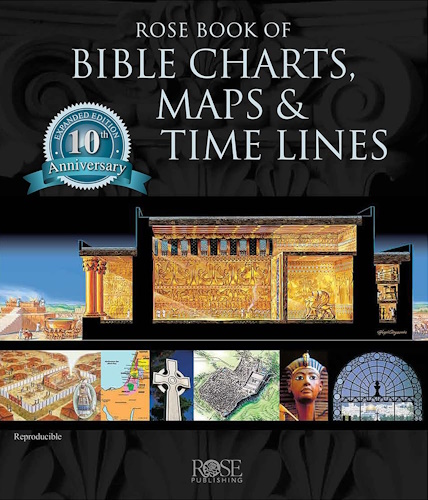

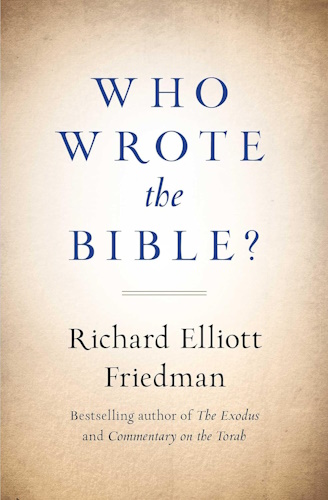



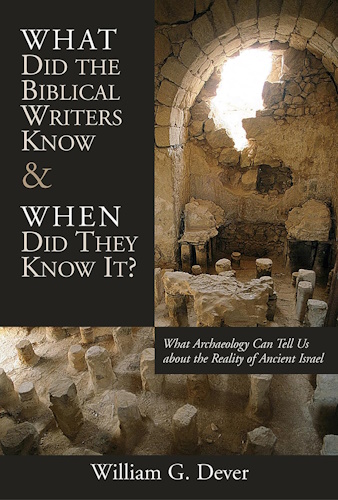



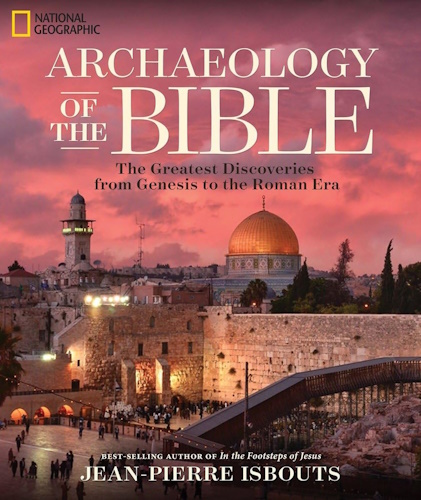

![]()
![]()
The Flood Narrative From the Gilgamesh Epic
Gilgamesh has made a long and difficult journey to learn how Utnapishtim acquired eternal life. In answer to his questions, Utnapishtim tells the following story. Once upon a time, the gods destroyed the ancient city of Shuruppak in a great flood. But Utnapishtim, forewarned by Ea (=Enki), managed to survive by building a great ship. His immortality was a gift bestowed by the repentant gods in recognition of his ingenuity and his faithfulness in reinstituting the sacrifice.
Shurippak - a city which thou knowest,
(And) which on Euphrates' banks is set -
That city was ancient, (as were) the gods within it,
When their heart led the great gods to produce the flood.
There were Anu, their father,
Valiant Enlil, their counsellor,
Ninurta, their herald,
Ennuge, their irrigator.
Ninigiku-Ea was also present with them;
Their words he repeats to the reed-hut (home of Utnapishtim):
'Reed-hut, reed-hut! Wall! Wall!
Reed-hut, hearken! Wall, reflect!
Man of Shuruppak (Utnapishtim), son of Ubar-Tutu,
Tear down (this) house, build a ship!
Give up possessions, seek thou life.
Despise property and keep the soul alive.
Aboard the ship take thou the seed of all living things.
The ship that thou shalt build,
Her dimensions shall be to measure.
Equal shall be her width and her length.
Like the Apsu (subterranean waters) thou shalt ceil her.'
I understood, and I said to Ea, my lord:
'Behold, my lord, what thou has thus ordered,
I shall be honoured to carry out.
But what shall I answer the city, the people and elders?'
Ea opened his mouth to speak,
Saying to me, his servant:
'Thou shalt then thus speak unto them:
I have learned that Enlil is hostile to me,
So that I cannot reside in your city,
Nor set my foot in Enlil's territory.
To the Deep I will therefore go down,
To swell with my lord Ea.
But upon you he will shower down abundance,
The choicest birds, the rarest fishes.
The land shall have its fill of harvest riches.
He who at dusk orders the husk-greens,
Will shower down upon you a rain of wheat
(...to deceive the residents of Shurrupak
as to the real intent of the rain).'
With the first glow of dawn,
The land was gathered about me.
[too fragmentary for translation]
The little ones carried bitumen,
While the grown ones brought all else that was needful.
On the fifth day I laid her framework.
One (whole ) acre was her floor space,
Ten dozen cubits the height of each of her walls,
The dozen cubits each edge of the square deck.
I laid out the shape of her sides and joined her together.
I provided her with six decks,
Dividing her (thus) into seven parts,
Her floor plan I divided into nine parts.
I hammered water-plugs into her.
I saw to the punting-poles and laid in supplies.
Six 'sar' (measures - about 8 gallons) of bitumen I poured into the furnace,
Three sar of asphalt I also poured inside.
Three sar of the basket-bearers transferred,
Aside from the one sar of oil which the caulking consumed,
And the two sar of oil which the boatman stowed away.
Bullocks I slaughtered for the people,
And I killed sheep every day.
Must, red wine, oil, and white wine
I gave the workmen to drink, as though river water,
That they might feast as on New Year's Day...
On the seventh day the ship was completed.
The launching was very difficult,
So that they had to shift the floor planks above and below,
Until two-thirds of the structure had gone into the water.
Whatever I had I laded upon her;
Whatever I had of silver I laded upon her;
Whatever I had of gold I laded upon her;
Whatever I had of all the living being I laded upon her.
All my family and kin I made go aboard the ship.
The beasts of the field, the wild creatures of the field,
All the craftsmen I made go aboard.
Shamash had set for me a stated time:
'When he who orders unease at night
Will shower down a rain of blight,
Board thou the ship and batten up the gate!'
That stated time had arrived:
'He who orders unease at night showers down a rain of blight.'
I watched the appearance of the weather.
The weather was awesome of behold.
I boarded the ship and battened up the gate.
To batten up the (whole) ship, to Puzur-Amurri, the boatman,
I handed over the structure together with its contents.
With the flirst glow of dawn,
A black cloud rose up from the horizon.
Inside it Adad (god of storm and rain) thunders,
While Shallat and Hanish (Heralds of Adad) go in front,
Moving as heralds over hill and plain.
Erragal (Nergal, the god of the netherworld) tears out the posts (out of the dam);
Forth comes Ninurta and causes the dikes to follow.
The Anunnaki lift up the torches,
Setting the land ablaze with their glare.
Consternation over Adad reaches to the heavens,
Turning to blackness all that had been light.
The wide land was shattered like a pot!
For one day the south-storm blew,
Gathering speed as it blew, submerging the mountains,
Overtaking the people like a battle.
No one can see his fellow,
Nor can the people be recognized from heaven.
The gods were frightened by the deluge,
And, shrinking back, they ascended to the heaven of Anu.
The gods cowered like dogs
Crouched against the outer wall.
Ishtar cried out like a woman in travail,
The sweet-voiced mistress of the gods moans aloud:
'The olden days are alas turned to clay,
Because I bespoke evil in the Assembly of the gods,
How could I bespeak evil in the Assembly of the gods,
Ordering battle for the destruction of my people,
When it is I myself who give birth to my people!
Like the spawn of the fishes they fill the sea!'
The Anunnaki gods weep with her,
Their lips drawn tight,...one and all.
Six days and six nights
Blows the flood wind, as the south-storm sweeps the land.
When the seventh day arrived,
The flood (-carrying) south-storm subsided in the battle,
Which it had fought like an army.
The sea grew quiet, the tempest was still, the flood ceased.
I looked at the weather: stillness had set in,
And all of mankind has returned to clay.
The landscape was as level as a flat roof.
I opened a hatch, and light fell on my face.
Bowing low, I sat and wept,
Tears running down my face.
I looked about the coast lines in the expanse of the sea:
In each of fourteen (regions)
There emerged a region (-mountain).
On Mount Nisir the ship came to a halt.
Mount Nisir held the ship fast,
Allowing no motion.
(Indecipherable or missing)
[For six days the ship is held fast by Mount Nisir.]
When the seventh day arrived,
I sent forth and set free a dove.
The dove went forth, but came back;
There was no resting place for it and she turned round.
Then I sent forth and set free a swallow.
The swallow went forth, but came back;
There was no resting-place for it and she turned round.
Then I sent forth and set free a raven.
The raven went forth and, seeing that the waters had diminished,
He eats, circles, caws, and turns not around.
The I let out (all) to the four winds
And offered a sacrifice.
I poured out a libation on the top of the mountain.
Seven and seven cult-vessels I set up
Upon their plate-stands I heaped cane, cedarwood, and myrtle.
The gods smelled the savour,
The gods smelled the sweet savour,
The gods crowded like flies about the sacrificer.
As soon as the great goddess (Ishtar=Ninhurti) arrived,
She lifted up the great jewels which Anu had fashioned to her liking:
'Ye gods here, as surely as this lapis
Upon my neck I shall not forget,
I shall be mindful of these days, forgetting (them) never.
Let the gods come and to the offering:
(But) let not Enlil come to the offering,
For he, unreasoning, brought on the deluge
And my people consigned to destruction.'
As soon as Enlil arrived,
And saw the ship, Enlil was wroth,
He was filled the wrath against the Igigi gods (heavenly gods):
'Has some living soul escaped?
No man was to survive the destruction!'
Ninurta opened his mouth to speak,
Saying to valiant Enlil:
'Who other than Ea can devise plans?
It is Ea alone who knows every matter.'
Ea opened his mouth to speak,
Saying to valiant Enlil:
'Thou wisest of the gods, thou hero,
How couldst thou, unreasoning, bring on the deluge?
On the sinner impose his sin,
On the transgressor impose his transgression!
(Yet) be lenient, lest he be cut off,
Be patient, lest he be dislodged!
Instead of they bringing on the deluge,
Would that a lion had risen up to diminish mankind!
Instead of thy bringing on the deluge,
Would that a wolf had risen up to diminish mankind!
Instead of thy bringing up the deluge,
Would that pestilence had risen up to smite down mankind!
It was not I who disclosed the secret of the great gods.
I let Atrahasis ('Exceedingly wise,' an epithet of Utnapishtim) see a dream,
And he perceived the secret of the gods.
Now then take counsel in regard to him!'
Thereupon Enlil went aboard the ship.
Holding me by the hand, he took me aboard.
He took my wife aboard and made (her) kneel by my side.
Standing between us, he touched our foreheads to bless us:
'Hitherto Utnapishtim has been but human.
Henceforth Utnapishtim and his wife shall be like unto us gods.
Utnapishtim shall reside far away, at the mouth of the rivers!'
Thus they took me and made me reside far away,
At the mouth of the rivers.
![]()
![]()










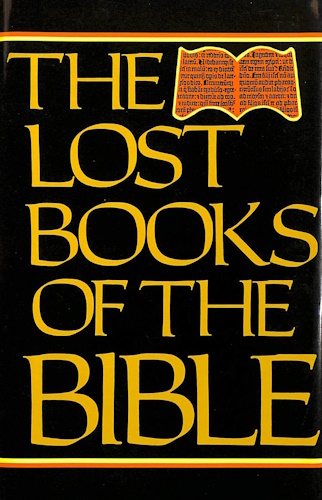

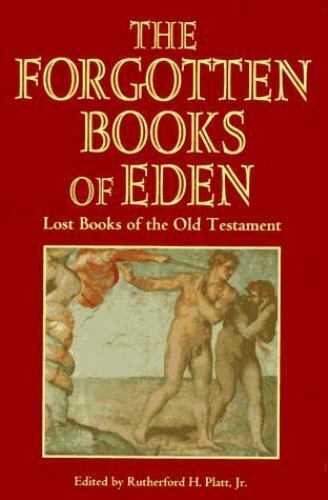

-
Urantia Book, 44:0.11 - The Celestial Artisans
Never in your long ascendancy will you lose the power to recognize your associates of former existences. Always, as you ascend inward in the scale of life, will you retain the ability to recognize and fraternize with the fellow beings of your previous and lower levels of experience. Each new translation or resurrection will add one more group of spirit beings to your vision range without in the least depriving you of the ability to recognize your friends and fellows of former estates.
-
Princess Bride 1987 Wallace Shawn (Vizzini) and Mandy Patinkin (Inigo Montoya)
Vizzini: HE DIDN'T FALL? INCONCEIVABLE.
Inigo Montoya: You keep using that word. I do not think it means what you think it means. -
Urantia Book, 117:4.14 - The Finite God
And here is mystery: The more closely man approaches God through love, the greater the reality -- actuality -- of that man. The more man withdraws from God, the more nearly he approaches nonreality -- cessation of existence. When man consecrates his will to the doing of the Father's will, when man gives God all that he has, then does God make that man more than he is.
-
Urantia Book, 167:7.4 - The Talk About Angels
"And do you not remember that I said to you once before that, if you had your spiritual eyes anointed, you would then see the heavens opened and behold the angels of God ascending and descending? It is by the ministry of the angels that one world may be kept in touch with other worlds, for have I not repeatedly told you that I have other sheep not of this fold?"
-
Urantia Book, Foreword - 0:12.12 - The Trinities
But we know that there dwells within the human mind a fragment of God, and that there sojourns with the human soul the Spirit of Truth; and we further know that these spirit forces conspire to enable material man to grasp the reality of spiritual values and to comprehend the philosophy of universe meanings. But even more certainly we know that these spirits of the Divine Presence are able to assist man in the spiritual appropriation of all truth contributory to the enhancement of the ever-progressing reality of personal religious experience—God-consciousness.
-
Urantia Book, 1:4.3 - The Mystery Of God
When you are through down here, when your course has been run in temporary form on earth, when your trial trip in the flesh is finished, when the dust that composes the mortal tabernacle "returns to the earth whence it came"; then, it is revealed, the indwelling "Spirit shall return to God who gave it." There sojourns within each moral being of this planet a fragment of God, a part and parcel of divinity. It is not yet yours by right of possession, but it is designedly intended to be one with you if you survive the mortal existence.
-
Urantia Book, 1:4.1 - The Mystery Of God
And the greatest of all the unfathomable mysteries of God is the phenomenon of the divine indwelling of mortal minds. The manner in which the Universal Father sojourns with the creatures of time is the most profound of all universe mysteries; the divine presence in the mind of man is the mystery of mysteries.
-
Urantia Book, 1:4.6 - The Mystery Of God
To every spirit being and to every mortal creature in every sphere and on every world of the universe of universes, the Universal Father reveals all of his gracious and divine self that can be discerned or comprehended by such spirit beings and by such mortal creatures. God is no respecter of persons, either spiritual or material. The divine presence which any child of the universe enjoys at any given moment is limited only by the capacity of such a creature to receive and to discern the spirit actualities of the supermaterial world.
-
Urantia Book, 11:0.1 - The Eternal Isle Of Paradise
Paradise is the eternal center of the universe of universes and the abiding place of the Universal Father, the Eternal Son, the Infinite Spirit, and their divine co-ordinates and associates. This central Isle is the most gigantic organized body of cosmic reality in all the master universe. Paradise is a material sphere as well as a spiritual abode. All of the intelligent creation of the Universal Father is domiciled on material abodes; hence must the absolute controlling center also be material, literal. And again it should be reiterated that spirit things and spiritual beings are real.
-
Urantia Book, 50:6.4 - Planetary Culture
Culture presupposes quality of mind; culture cannot be enhanced unless mind is elevated. Superior intellect will seek a noble culture and find some way to attain such a goal. Inferior minds will spurn the highest culture even when presented to them ready-made.
-
Urantia Book, 54:1.6 - True And False Liberty
True liberty is the associate of genuine self-respect; false liberty is the consort of self-admiration. True liberty is the fruit of self-control; false liberty, the assumption of self-assertion. Self-control leads to altruistic service; self-admiration tends towards the exploitation of others for the selfish aggrandizement of such a mistaken individual as is willing to sacrifice righteous attainment for the sake of possessing unjust power over his fellow beings.
-
Urantia Book, 54:1.9 - True And False Liberty
How dare the self-willed creature encroach upon the rights of his fellows in the name of personal liberty when the Supreme Rulers of the universe stand back in merciful respect for these prerogatives of will and potentials of personality! No being, in the exercise of his supposed personal liberty, has a right to deprive any other being of those privileges of existence conferred by the Creators and duly respected by all their loyal associates, subordinates, and subjects.
-
Urantia Book, 54:1.8 - True And False Liberty
There is no error greater than that species of self-deception which leads intelligent beings to crave the exercise of power over other beings for the purpose of depriving these persons of their natural liberties. The golden rule of human fairness cries out against all such fraud, unfairness, selfishness, and unrighteousness.







